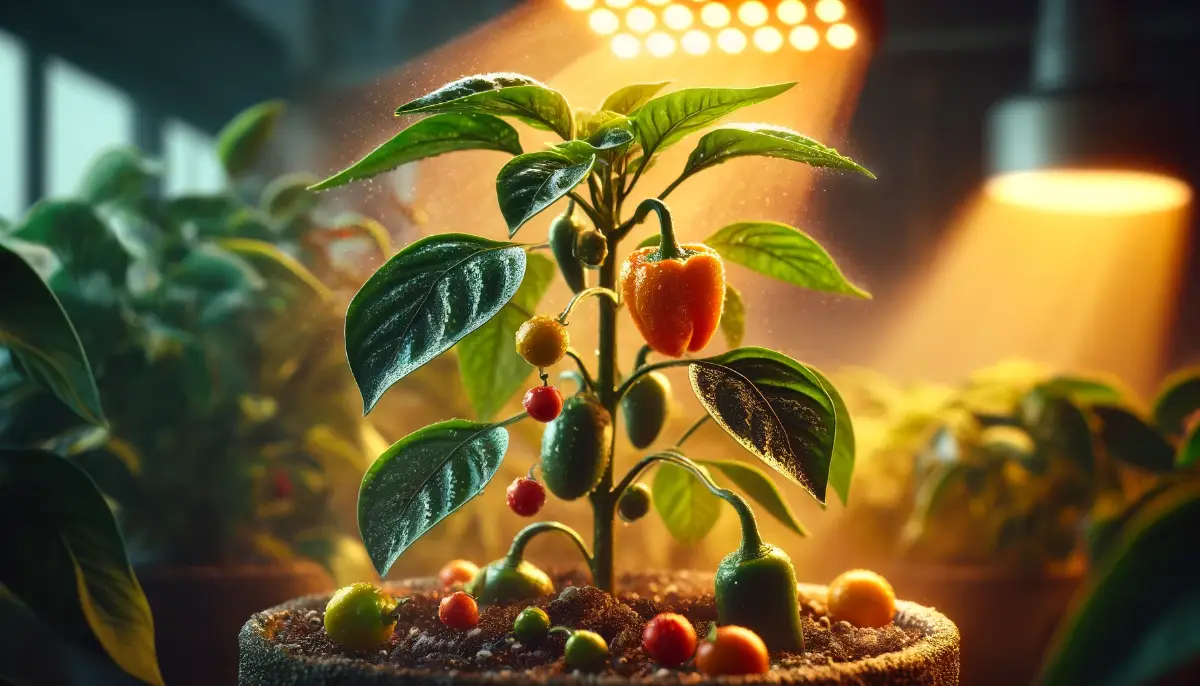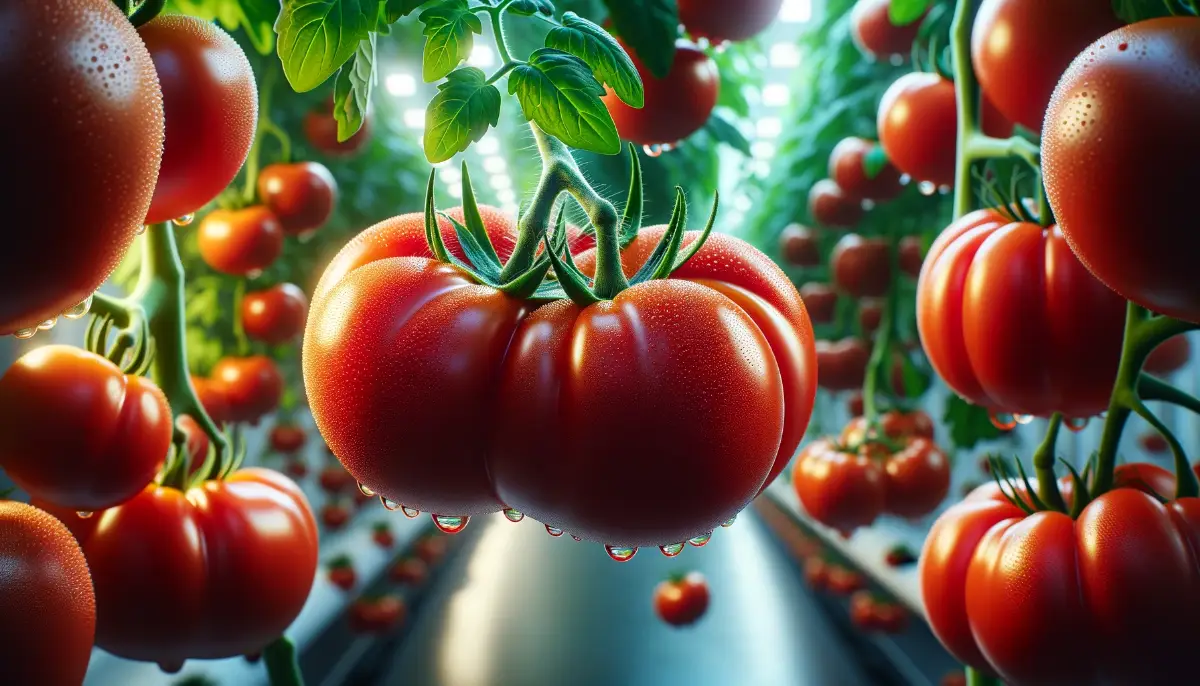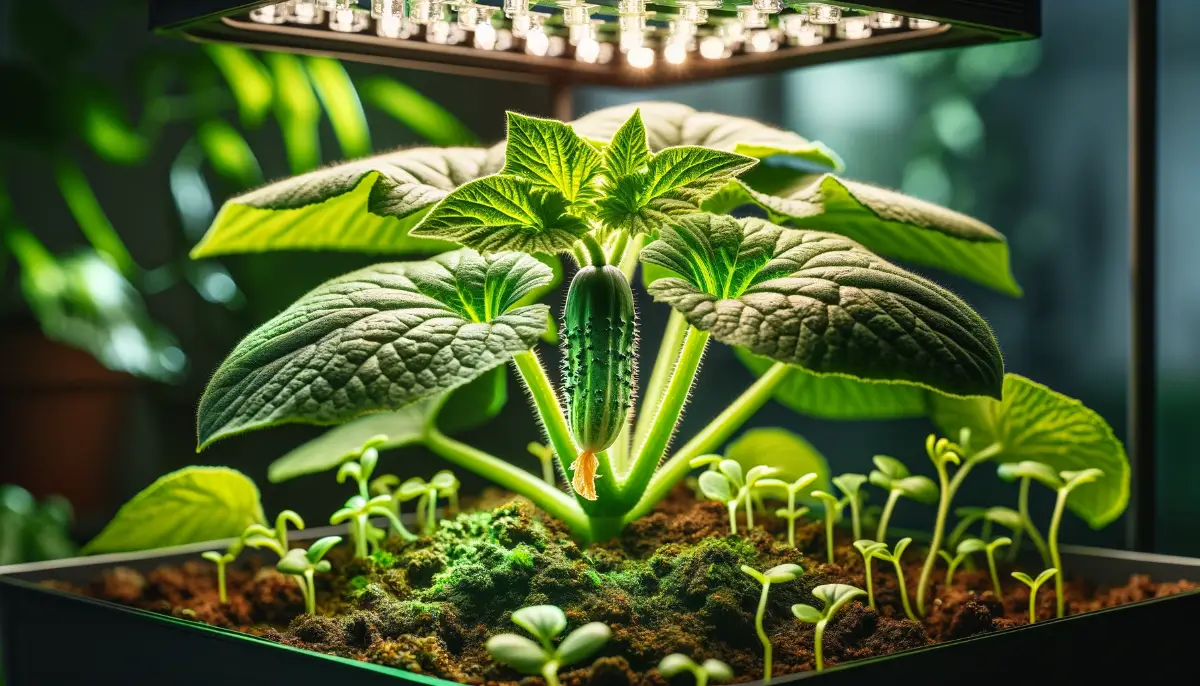Growing and caring for organic indoor peppers is a rewarding endeavor that brings the joy of gardening into your home year-round. Whether you’re a seasoned gardener or a curious newbie, the process of nurturing these vibrant plants from seed to harvest is a fascinating journey.
Not only do indoor peppers add a pop of green to your living space, but they also provide fresh, flavorful additions to your cooking.
- Understanding the ideal conditions for growing organic indoor peppers.
- Selecting the right pepper varieties for indoor cultivation.
- Step-by-step guide to germinating pepper seeds and caring for seedlings.
- The importance of lighting, temperature, and humidity in pepper growth.
Choosing the Right Varieties
When embarking on your indoor pepper growing adventure, selecting the right varieties is crucial. Opt for quick-maturing types that thrive in the less intense light and variable temperatures of indoor environments.
Varieties such as jalapenos, bell peppers, and cherry peppers are excellent choices for their adaptability and shorter growing cycles.
Seeding and Germination
Starting your peppers from seeds is the first exciting step toward your indoor garden. Here’s how to ensure successful germination:
Prep Your Seeds
Soak your pepper seeds in warm water for 2-8 hours to speed up germination. This helps break down the seed’s outer layer, making it easier for the sprout to emerge.
Soil and Temperature
Use a sterilized potting mix to fill your seed trays. Pepper seeds germinate best at temperatures around 70°F. Place the trays in a warm spot or use a heat mat to maintain consistent soil temperature.
Sowing
Plant the seeds a quarter-inch deep in the soil. Cover them lightly with more potting mix, then water gently to moisten the soil without making it soggy.
Light and Moisture
After the seeds sprout, ensure they receive plenty of light—either from a sunny window or supplemental grow lights. Keep the soil consistently moist but not waterlogged.
Growing organic indoor peppers is a journey of patience and care. By starting with the right varieties and providing your seedlings with the proper conditions from the start, you’re setting the stage for a thriving indoor garden.
Stay tuned for the next steps in nurturing your pepper plants to maturity, where we’ll delve into lighting requirements, soil and watering tips, temperature and humidity control, and more.
Continuing with our comprehensive guide on growing and caring for organic indoor peppers, this part focuses on the essential aspects of care and maintenance to ensure your peppers thrive indoors. From understanding the significance of proper lighting to mastering the art of watering, fertilization, and temperature control, this section covers everything you need to know to nurture your indoor pepper garden to its full potential.
Lighting Requirements
Peppers are sun-loving plants, requiring ample light to produce bountiful yields. Indoors, achieving this can be challenging, especially during the shorter days of winter. Here’s how to ensure your peppers get enough light:
Supplemental Lighting
If natural sunlight is insufficient, especially in winter, consider using grow lights. LED grow lights are energy-efficient and can be placed closer to the plants without overheating them. Aim for 14-16 hours of light per day to mimic the natural sunlight peppers would receive outdoors.
Adjusting Light Intensity
To prevent stressing the plants, start with lower light intensity and gradually increase. If your lights have a dimmer, increasing the intensity by 5% each week can help your plants acclimate without stress
Soil and Watering
Choosing the right soil and maintaining proper moisture levels are critical for the health of indoor pepper plants:
Soil Mix
Use a high-quality potting mix that is well-draining yet retains enough moisture to keep the roots happy. A mixture of peat, perlite, and organic matter often works well, providing the necessary nutrients and aeration.
Watering Schedule
Water your peppers when the top inch of soil feels dry to the touch. Be cautious not to overwater, as peppers do not like to sit in soggy soil. Using a spray bottle can help you water the soil directly without wetting the foliage, which can lead to disease.
Temperature and Humidity Control
Creating an optimal growing environment in terms of temperature and humidity is essential for indoor peppers:
Ideal Temperatures
Most pepper varieties thrive in temperatures between 70-80°F during the day, slightly cooler at night. Use a thermometer to monitor the temperature, adjusting your home’s heating or the placement of your plants as needed.
Humidity Levels
Peppers prefer moderate humidity levels, around 40-50%. If your indoor air is too dry, consider using a humidifier or placing a water tray near your plants to increase humidity.
Fertilization and Care
Fertilizing your pepper plants is crucial to their growth and fruit production:
Fertilizer Application
Once your pepper plants are about 4 inches tall, start a regular fertilization regimen. Use a balanced, organic fertilizer according to the package instructions, typically once every two weeks. Be mindful of the nutrient content in your potting mix, as some soils may already contain slow-release fertilizers.
Regular Check-ins
Peppers require attention and care. Regularly inspect your plants for signs of stress, pests, or diseases. Promptly address any issues to prevent them from escalating and affecting the health of your plant.
By providing your organic indoor peppers with the right care and conditions, you can enjoy a healthy, productive garden inside your home. With patience and attention to detail, you’ll be rewarded with a bounty of fresh peppers to spice up your cooking.
FAQs on grow and care for peppers indoor
What types of pepper plants are best for indoor gardening?
For indoor gardening, choose quick-maturing varieties that can adapt well to less intense light and the indoor environment’s variable temperatures. Jalapenos, bell peppers, and cherry peppers are excellent choices due to their adaptability and shorter growing cycles.
How can I ensure my indoor pepper plants receive enough light?
Indoor pepper plants thrive with ample lighting. If natural sunlight is limited, especially during winter, supplement with grow lights. Aim for 14-16 hours of light per day using LED grow lights, which are energy-efficient and can be placed closer to the plants without overheating them.
What is the best soil mix for indoor pepper plants?
Use a high-quality potting mix that is well-draining yet retains enough moisture. A mixture of peat, perlite, and organic matter provides the necessary nutrients and aeration. Avoid using garden soil as it might introduce pests or diseases to your indoor garden.
How often should I water my indoor pepper plants?
Water your pepper plants when the top inch of soil feels dry to the touch. It’s important not to overwater, as peppers do not like soggy soil. A spray bottle can help water the soil directly without wetting the foliage, which can lead to disease.
What are the ideal temperature and humidity levels for growing peppers indoors?
Most pepper varieties prefer temperatures between 70-80°F during the day and slightly cooler at night. Moderate humidity levels, around 40-50%, are ideal. Adjust your home’s heating or use a humidifier to maintain these conditions if necessary.
When should I fertilize my indoor pepper plants?
Begin fertilizing your pepper plants when they are about 4 inches tall, using a balanced, organic fertilizer according to the package instructions. This typically means fertilizing once every two weeks, but adjust based on the growth and health of your plants.
How do I pollinate indoor pepper plants?
Pepper plants usually self-pollinate, but indoors, you may need to assist the process. Gently shake the plant to distribute pollen or use a small brush to transfer pollen from one flower to another to ensure fruit set.
How can I tell when my peppers are ready to harvest?
Peppers are ready to harvest when they reach the desired size and color specific to their variety. Some peppers can be picked while still green, though letting them ripen on the plant often enhances their sweetness and vitamin content.









